This systematic review looks at all available evidence for pharmacological/neurosurgical interventions for managing dystonia in individuals with cerebral palsy to inform the AACPDM care pathway.
The Dystonia Care Pathway was created in 2016 based on best available evidence and is currently under revision. This link will be updated accordingly. The goal of the these Care Pathways is to help Health Care Professionals understand the research evidence on the topic so that they can make clinical decisions for the care of the individual.
Welcome to the second part of my travel series! In the previous post, I wrote about how I found my love for traveling through my trip to Madrid and Paris. Looking back, not only do I realize that these trips took place during very different phases of my adult life, but they also mark the different phases of my CP in recent years. Although CP is the result of a non-progressive brain injury, many folks experience a decline in their physical abilities in their adult years — the inevitable effect of aging, not just for those with disabilities, but for everyone.

In the next couple of blog posts, I’ll write about some of my favorite trips that I took over the years. I’ll travel down memory lane of all the new places I explored in recent years and eagerly wait until my next trip.
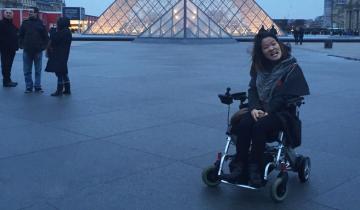
My cousin, Reeva, had recently moved to Kyoto, Japan to learn Japanese for a year, and she convinced me to visit her there. I didn’t know anyone else living in Japan and Reeva was going to be there short term, so I couldn’t possibly pass up going! I was admittedly pretty nervous about traveling all the way across the world— a 24-hour long plane trip, including a layover— especially to a country that uses a language that isn’t remotely like anything I was used to. But, again, I wasn’t going to miss this once-in-a-lifetime opportunity.

Supportive Standing Devices, also known as Standers, are frequently recommended equipment for individuals who are primarily wheelchair users. There are lots of different types of standers which can support a range of different physical and activity needs. Learn more about them here!

A new school year means new teachers, a new grade, new friends, new goals and maybe even a new school. Our friends at Learning Disabilities Online have put together these helpful tips to help you and your child or teen transition back to school a little easier.
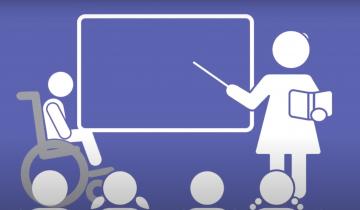
Jen Lyman provides a parent perspective on powered wheelchair standing devices as it relates to Dr. Lisa Kenyon's research article.
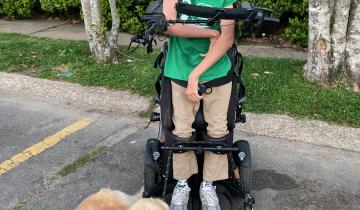
Living with CP taught Dr. Kathleen Friel much about educating others about her disability and now about her life threatening diagnosis of Metastatic Breast Cancer.

Plain Language Summaries are an excellent way to get a clear overview of clinical research. Our friends with Mac Keith Press and the AACPDM Community Council have worked together to choose articles that might be right for you.
The purpose of this study was to pilot an intervention of a sport-based youth development program modified for accessibility for children and adolescents with movement challenges, with the goal of community-based running participation using running frames.
Bimanual therapy, also referred to as intensive bimanual training, engages patients in active play or practice to improve the use and coordination of both hands. Bimanual therapy is different from similar unimanual therapies, like constraint-induced movement therapy (CIMT), because it promotes simultaneous use of both hands.
This study highlights caregiver knowledge and preferences to understanding the GMFCS and how that information should be relayed from clinicians.
The GMFCS, MACS and CFCS are all tools used by therapists and researchers to help classify the functional capabilities of individuals with CP. This research article provides evidence of their stability over time.
The GMFCS can be a helpful tool in clinical and research use and has been shown to be stable and accurate over time. It can also help individuals and families better understand cerebral palsy.
Powered mobility can offer users young and old a level of freedom and independence that may not be achieved through manual wheelchairs or other mobility devices.
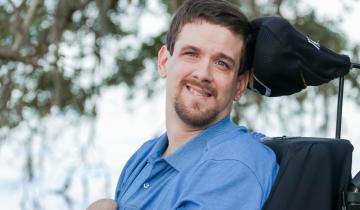
Adults with Cerebral Palsy have unique care needs related to physiological changes that occurred with growth and development with Cerebral Palsy, including mental health, yet experience many barriers to proper care.
Early powered mobility has been shown to improve cognition in children with multiple, complex disabilities.
The Winter Paralympics is a great opportunity to learn about the many adaptive recreational and competitive sports for individuals with cerebral palsy.
Growing up with Cerebral Palsy I often wondered if I would ever experience my happily ever after. The fairytales my mom read me always followed the life of a beautiful princess falling in love with a handsome prince. You never read about a prince and princess in wheelchairs or with any type of disability for that matter.
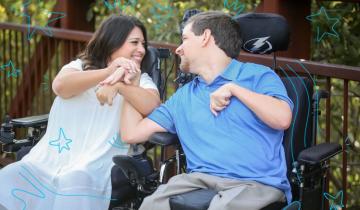
The purpose of this study is to explore the breast cancer screening experiences of women with CP with the aim of identifying factors that could improve screening rates for women with disabilities.
Adults with Cerebral Palsy have unique care needs related to physiological changes that occurred with growth and development with Cerebral Palsy, including mental health, yet experience many barriers to proper care.
Though the initial insult or injury to the brain that causes cerebral palsy is non-progressive, aging with cerebral palsy and lack of physical activity during critical periods of development can impact biologic and metabolic function for adults with cerebral palsy.
Setting up a Third Party-Special Needs trust as part of estate planning is essential if the individual with a disability is or may be eligible for means-tested government benefits. A properly set up Third Party Trust ensures that the funds left to the individual, whether through gift or inheritance, are not considered countable assets when applying for means tested benefits

A special needs trust is a written legal agreement that enables an individual with a disability to qualify or remain qualified for means tested government benefits, such as medicaid, SSI or even medicaid waivers.

